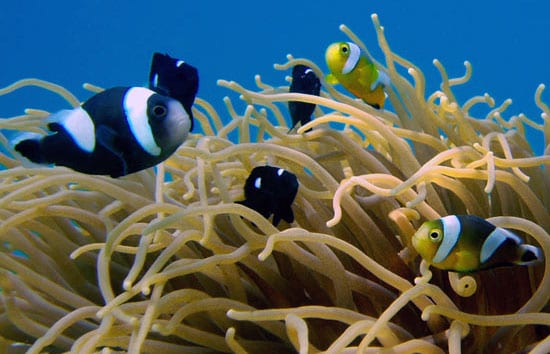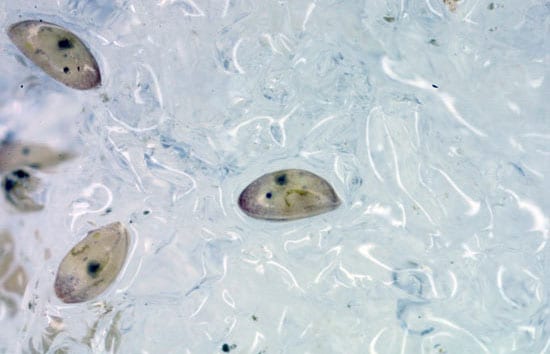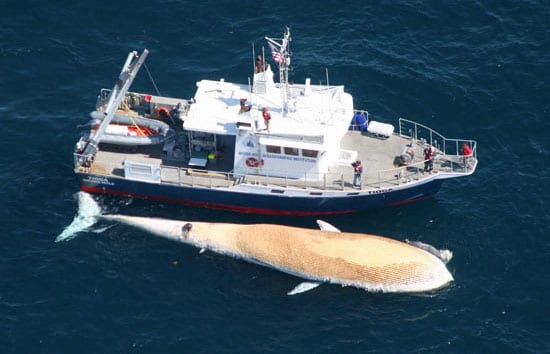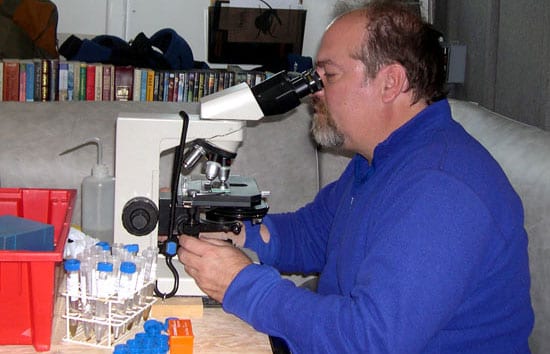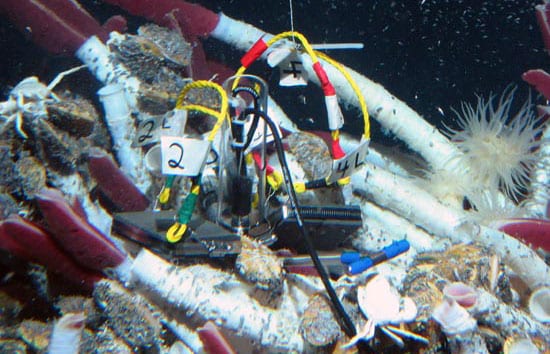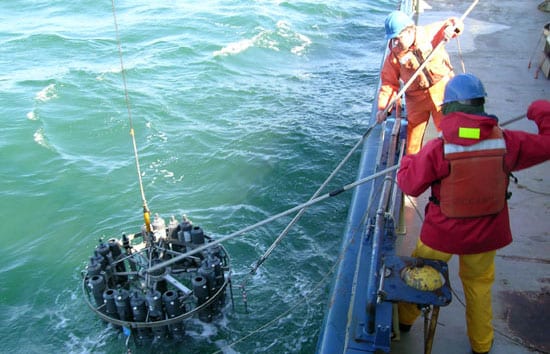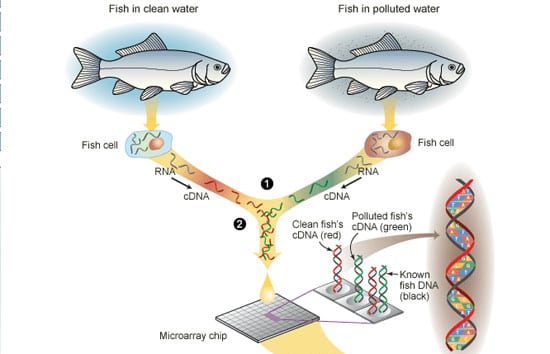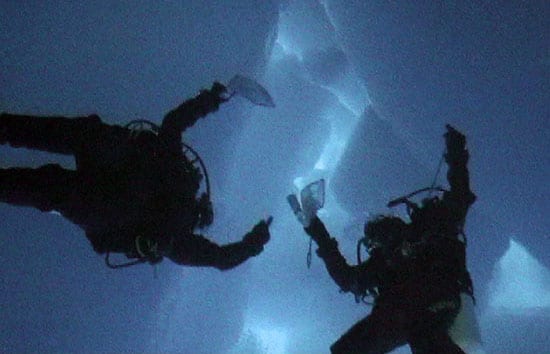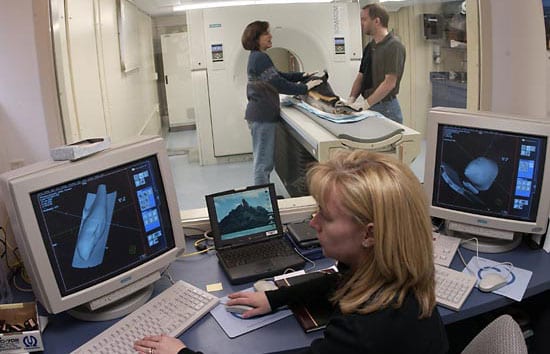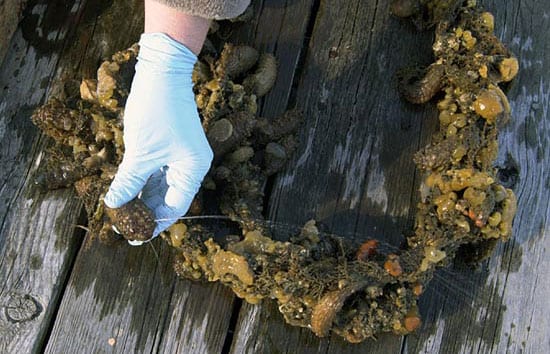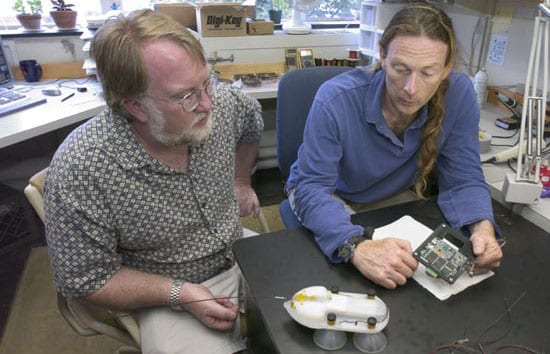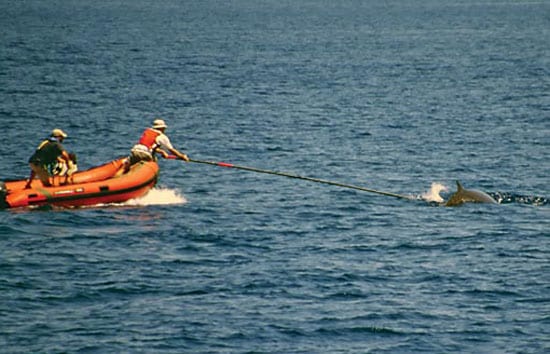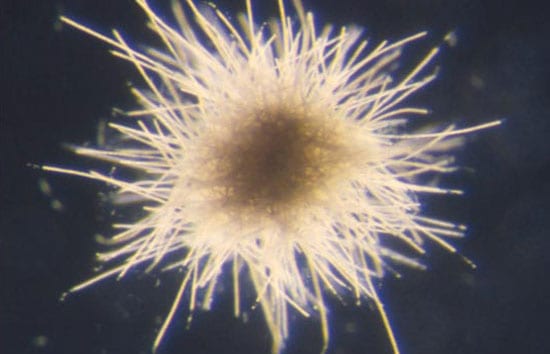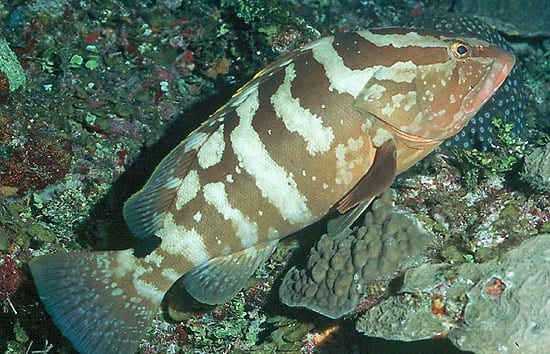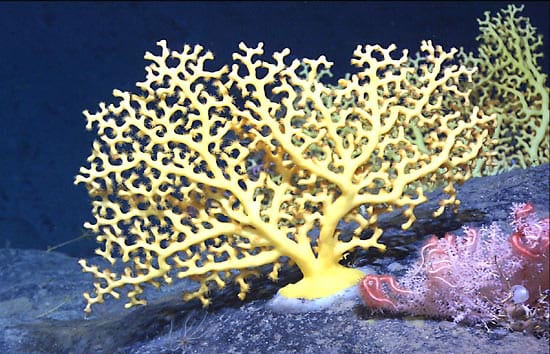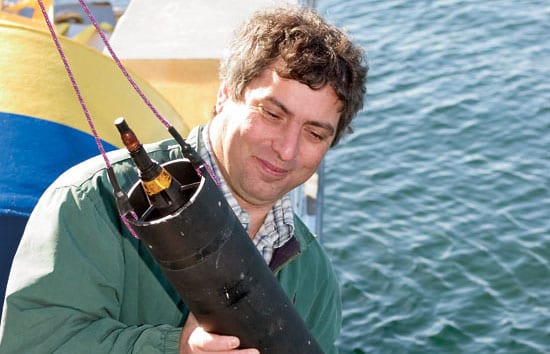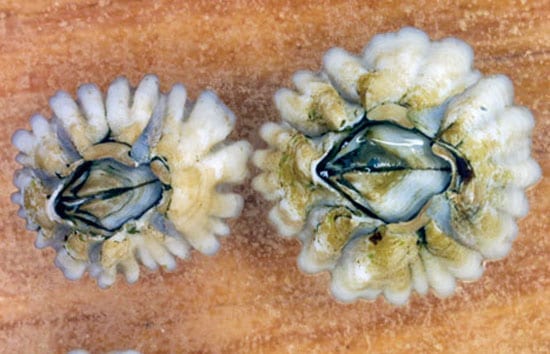Biology
Finding Nemo…and Other Endangered Fish
A novel method to track fish larvae?using tetracycline to tag otoliths, or ear bones?sheds lights on which marine areas to protect
Read MoreCold Comfort for Barnacles
A WHOI research team reports that barnacle larvae can remain frozen up to seven weeks and still revive, settle, and grow to reproduce. The discovery offers a new understanding of barnacle larvae, which are abundant sources of food for larger animals in the coastal ocean. It also provides possible clues to how other intertidal marine invertebrates may settle and survive harsh winters.
Read MoreBig Whale, Big Sharks, Big Stink
A shipping tanker first spotted the whale on Sept. 9 about 24 miles southeast of Nantucket, Mass. It floated belly up—species unknown, cause of death a mystery. Like a detective,…
Read MoreAnderson Addresses UN Ocean Commission
Senior Scientist Don Anderson of the WHOI Biology Department was invited to deliver the Bruun Memorial Lecture in June at the 23rd annual meeting of the Intergovernmental Oceanographic Commission (IOC) of the United Nations Educational, Social, and Cultural Organization (UNESCO).
Read MoreA Whale Expert is Called in to Decipher Odd Elephant Calls
An article about work done by WHOI postdoctoral investigator Stephanie Watwood to analyze atypical sounds made by two African elephants, one imitating a truck and one the calls of another elephant species
Read MoreRed TideGone for Now, But Back Next Year?
The historic bloom of toxic algae that blanketed New England’s waters and halted shellfishing from Maine to Martha’s Vineyard in the spring of 2005 is over. But scientists are now wondering if there will be an encore.
Before departing, the algae likely left behind a colonizing population that may promote blooms in southern New England for at least the next few years.
Settling on the Seafloor
People may search for a long time, but they know it when they see it—the right job in the right town, or the right house in the right neighborhood. Then…
Read MoreOn the Seafloor, a Parade of Roses
Third generation of scientists finds third generation of hydrothermal vent sites.
Read MoreSeeing Red in New England Waters
Coastal resource managers shut down shellfish beds in three New England states in mid-May—including rare closures of Massachusetts Bay and Cape Cod Bay—because of an intense bloom of the toxic algae Alexandrium fundyense. Researchers from the Woods Hole Oceanographic Institution saw the ‘red tide’ coming before its toxic effects reached the shore.
Read MoreSensors to Make Sense of the Sea
It is difficult and expensive to go to sea, hard to reach remote oceans and depths, and impossible to stay long. Like scientists in other fields, oceanographers use sensors to project their senses into remote or harsh environments for extended time periods. But the oceans present some unique obstacles: Instruments are limited by available power, beaten by waves, corroded by salt water, and fouled by prolific marine organisms that accumulate rapidly on their surfaces.
Read MoreRisks and Remedies from the Sea
Researchers from Woods Hole Oceanographic Institution, the Marine Biological Laboratory (MBL), and the Massachusetts Institute of Technology (MIT) have embarked on a novel collaboration to investigate harmful algal blooms, ocean-borne pathogens, and potential pharmaceuticals from marine sources.
Read MoreDown to the Sea on (Gene) Chips
The genomics revolution has reached the oceans. New genomic techniques are being used to find previously unknown life forms in the oceans; to learn how species, and genes themselves, evolved over Earth?s long history; to understand the genetic tools that allow species to adapt to diverse and often harsh environments; and to investigate species? responses to pollutants.
Read MoreVoyages into the Antarctic Winter
At the extreme ends of the Earth, Antarctica is a vast, rocky continent, mostly ice-covered and barren. Surrounding Antarctica, the Southern Ocean is equally vast, cold, and ice-covered. But unlike the land, it teems with life, ranging from microscopic plankton to top predators: whales, seals, penguins, fish, and sea birds.
Read MoreHow to See What Whales Hear
On summer nights, if you sit quietly at the edge of a field or watch the edges of the light pools around street lamps, you will see bats swooping through…
Read MoreBig Trouble from Little Squirts
Welcome to the online version of Oceanus, the magazine that explores Earth’s last frontier. Oceanus delivers news and commentary on the meaning and value of ocean research, engineering, and education at Woods Hole Oceanographic Institution.
Read MorePlaying Tag with Whales
The challenge of designing a device to learn what marine mammals do on dives is the stuff of dreams for an electronics engineer.
Read MoreRun Deep, But Not Silent
For the first time in history, we can accompany a whale on its dive, hear what it hears, and observe its normal, natural, previously hidden behavior in the depths. Working closely together, scientists and engineers have created an innovative new device—the digital acoustic recording tag, or D-tag. It attaches to a living whale and records nearly everything that happens on its dives, without disturbing the animal.
Read MoreLittle Things Matter A Lot
One group of bacteria—the cyanobacteria—has completely transformed Earth’s environment through their long history. Three billion years ago, ancestors of cyanobacteria infused Earth’s ancient atmosphere with the byproduct of their photosynthesis—oxygen—changing the chemistry of the planet and setting the stage for entirely new oxygen-breathing life forms to evolve. Without the cyanobacteria, the life we see around us, including humans, simply wouldn’t be here.
Read MoreTracking Fish to Save Them
For decades, the Nassau grouper (Epinephelus striatus) was one of the most sought-after fish species in the Caribbean and Gulf of Mexico, from the Bahamas to Central America. These large, delicious fish live among coral reefs and have a breeding behavior that makes them especially vulnerable. They come together in aggregations of thousands to spawn at specific times and places, making them easy to catch—and to overfish.
Read MoreCoral Gardens in the Dark Depths
The words “coral reefs” conjure up images of a tropical paradise: shallow, warm, aquamarine waters, bright sunlight, white coral sand, and colorful, darting fish. But corals also live deep in the sea, in regions where the sun doesn’t penetrate and water temperatures remain just above freezing.
Read MoreNew Instrument Sheds Light on Bioluminescence
Bioluminescence is ubiquitous in the oceans, and especially prevalent in coastal regions where nutrients are abundant and life thrives. Yet scientists have little basic understanding of how bioluminescence is influenced by water temperatures, depths, seasons, geographic locations, even different times of day.
Read MoreCan We Catch More Fish and Still Preserve the Stock?
People have always fished. But the history of fishing is also the history of overfishing. For hundreds of years, the establishment and enforcement of fishery management policies have generated controversy, as competing authorities have searched for a way to balance competing goals—to catch as many fish as possible while conserving the resource. To resolve this dilemma, we have applied mathematics—and we are finding that the ancient solution may still prove effective in modern times.
Read MoreA Fatal Attraction for Harmful Algae
Estuaries are the borderlands between salt and freshwater environments, and they are incredibly diverse
both biologically and physically. The diversity and the high
energy of the ecosystem make estuaries remarkably resilient.
With a better understanding of these systems, we can reverse
their decline and restore the ecological richness of these
valuable, albeit muddy, environments.
Rites of Passage for Juvenile Marine Life
The childhood of a barnacle is fraught with challenges. It hatches in shallow waters close to shore as a tiny larva, no bigger than a speck of dust. Currents sweep it to deeper, choppy waters, sometimes miles offshore. In these proving grounds each larva floats, at the mercy of hungry fish and swift ocean currents. Billions of larvae?including fish, lobsters, clams, starfish, and sea cucumbers?begin life this way. Only a few survive and return to shore, where they settle on rocks or sandy seafloor to become adults. Why larvae make their offshore journey remains unclear, but we are beginning to uncover the intricacies of their return trip?learning how waves, currents, eddies, tides, and other phenomena bring larvae back toward the shore.
Read More
